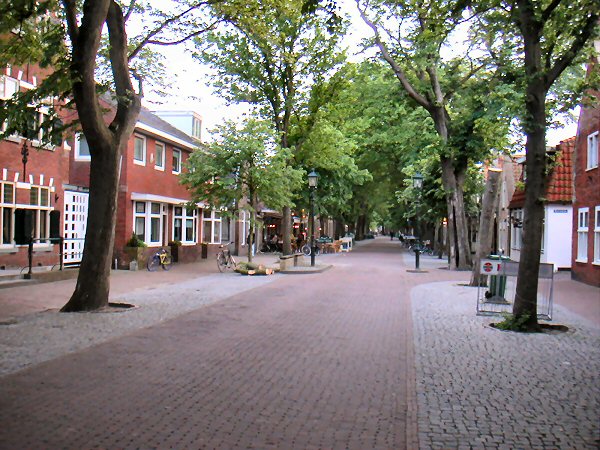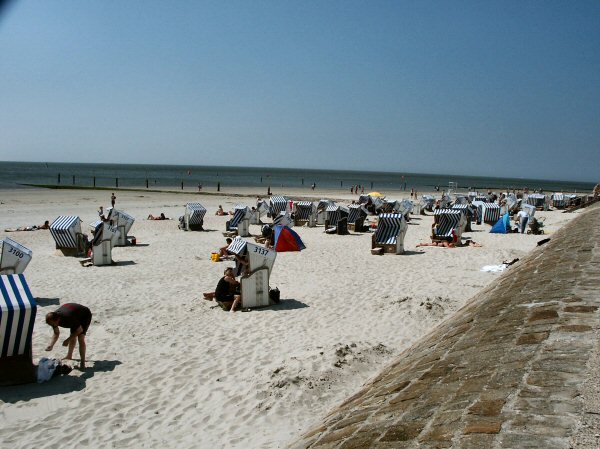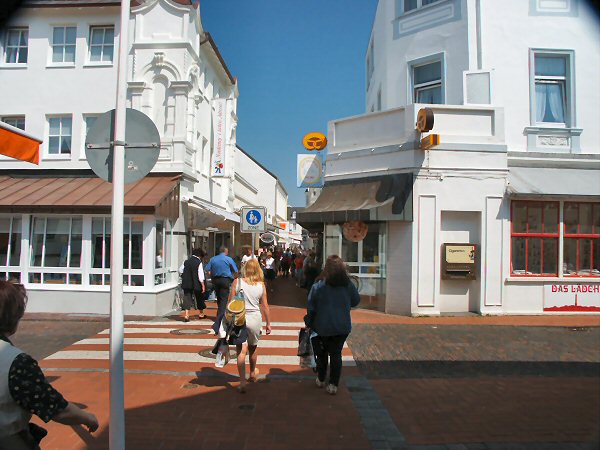
Frisian Islands
However you decide to get to Kiel, you cannot bypass the Frisian Islands. These long, low, sandy islands, are 'Riddle of the Sands' country, and many people visit them to retrace the story in the book.
To get to the Baltic however, you will scurry past. This corner of the North Sea has a reputation for being a bit bouncy, and the lack of decent ports of refuge make the journey more daunting for a small boat.
In truth, the trip is simple, if rather boring. Heading for Kiel, you can stay in the ITZ all the way. Traffic is light enough to be little bother, and as long as you don't stray into the TSS (there are stories of German patrol boats rushing out to fine you if you do) all is well.
Its 169 miles from Den Helder to Cuxhaven, which takes about a day and a half, depending on how you play the tides. These are of limited significance for the bulk of the trip but need watching when getting towards the Elbe estuary.
Just about all the islands do have ports or marinas of some form, and in theory it is possible to get into most of them. The entrances between the islands (Seegats) can get very rough in onshore winds, but the main problem is that they mostly face west. This means a trip of up to ten miles in the wrong direction when traveling east.
A few Seegats have 'cut-throughs' to the east to reduce the traveling, and this makes these particular locations more viable.
Charts
The bouyage in the area does change, so you need some reasonable charts. We use the BA series for offshore traveling, although any other series will do. If you are just nipping behind the Islands for refuge, you can get away with few charts as the area is well buoyed, but any significant routing and you need some thing better. For the Dutch Frisian Islands the best bet are the Dutch Hydrografische Kaarts, of which 1811 covers the western islands and 1812 the eastern ones up to Borkum.
For some reason, there seems to be few decent pilots for the area. Brian Navin's Cruising Guide is the best, with many others out of print. There is a Frisian Pilot by Mark Brackenbury, second hand copies may be available from Amazon.
Vlieland
One of the major destinations in the Netherlands, the marina at Oost-Vlieland is almost always full, but one look at the place and you realise why. Its a lovely location, with a tree-lined street and a number of good restaurants (we recommend the Visrestaurant Oosterbaan).
The marina is located just behind the Eastern end of the island, and although it is possible sometimes to walk across the boats, if you travel a few hundred yards further on, you can anchor in peace just off the town.
Borkum
Just about half way between Den Helder and Cuxhaven, Borkum is the only location you can get in easily at night and in rough weather, however it is very bumpy with the wind against the Ebb (we've been there..)
There are two main routes in from the west. The one nearer the mainland, the Hubertgat, is useful for yachts. The cut-through to the east, Riffgat, cuts some 8 miles off the journey.
The town is on the western end of the island and is a major German resort. The harbour, like most of those around here, is just behind the island and is accessed through a dredged channel protected by a wall. The marina is to port just before you get to the harbour, but it is not inviting. The pontoons are metal, with lugs sticking out, and droop alarmingly. The marina also silts, and at low tide the boat sits in the mud. While we were there the electrics (which were only on some pontoons) failed regularly. Against that, the marina restaurant is excellent.
The harbour, just a little further on also to port, does have pontoons, and may be a better bet. There is a small chandlers on the far side of the harbour that usually sells charts.
The town, unfortunately, is some way away (about 2-3 miles) although you can hire a bike from the marina, and there is a train from the ferry station nearby. The resort, heavily reminiscent of Eastbourne about ten years ago, is full of German pensioners. The most popular thing on sale is a macintosh.
Remember that this is the first port in Germany, and you may get approached by customs. On balance, there are better options.
Norderney
Probably the German resort, with a regular service to the mainland and a huge marina, Norderney is an excellent place to stop. The marina is fairly close to the town, the harbourmaster friendly, and its a great place to wait for the right tide for the Elbe.
Getting into Norderney is easy, even without the right chart (as we found out). There are two routes in, the main one called the Doveteif to the east, and with a cut through called Schluchter to the west. The channels move fairly often, so the charts are not that useful anyway, but they are well bouyed and reliable. There's not a lot of water in them at low tide though.
The last time we were there was on one of the Germans many holidays (this was 'Men's day') and although we arrived about 9PM, the harbour master, who Pat thought was rather handsome, and who spoke good english, found us to a berth in the marina. The marina was good value, €12 a day.
There are many fine beaches in Norderney, and although there tends to be a bracing breeze off the North Sea to keep the temperatures down, there was even some topless sunbathing - and not only the men!
A major find, for us Ice Cream buffs, was the Ice Cream 'Bakery'. Here they make crisp waffle cones (large ones) and use the still-warm cones to make major ice cream sundaes. All sorts of things can be piled in to the cone. We thought they were good value at €3.50, but not quite as good as Marine Ices.


